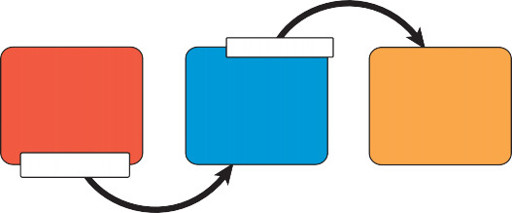Fundamentals of Midwifery: A Textbook for Students (101 page)
Read Fundamentals of Midwifery: A Textbook for Students Online
Authors: Louise Lewis

BOOK: Fundamentals of Midwifery: A Textbook for Students
7.95Mb size Format: txt, pdf, ePub
Infant Feeding Survey 2010: Summary
.
London: The Information Centre for Health and Social Care.
McGuire, W., Anthony, M.Y. (2003) Donor human milk versus formula for preventing necrotising enterocoli- tis in preterm infants: systematic review.
Archives of Disease in Childhood Fetal and Neonatal Edition
88, pp. F11–F14.
McInnes, R.J., Chambers, JA. (2008) Supporting breastfeeding mothers: qualitative synthesis.
Journal of Advanced Nursing
62 (4), pp. 407–427.
Messner, A.H., Lalakea, M.L., Aby, J., Macmahon, J., Bair, E. (2000) Ankyloglossia incidence and associated feeding difficulties.
Archives Otolaryngology Head Neck Surgery
126, pp. 36–39.
Mettias, B., O’Brien, R., Mohamed, M., Khatwa, A., Nasrallah, L., Doddi, M. (2013) Division of tongue tie as an outpatient procedure. Technique, efficacy and safety.
International Journal of Pediatric Otorhi- nolaryngology
77, pp. 550–552.
National Institute for Health and Clinical Excellence (NICE) (2005)
Division of Ankyloglossia (Tongue-Tie) for Breastfeeding
. London: NICE.
Noonan, M. (2010) lactational mastitis: recognition and breastfeeding support.
British Journal of Midwifery
18 (8), pp. 503–508.
Page-Goertz, S., Riordan, J. (2010) The ill child: breastfeeding implications. In: (eds) Riordan, J., Wambach,
Breastfeeding and Human Lactation
, 4th edn. Boston: Jones and Bartlett.Powers, N.G. (2010) Low intake in the breastfeeding infant: maternal and infant considerations. In: (eds) Riordan J., Wambach, K.
Breastfeeding and Human Lactation
, 4th edn. Boston: Jones and Bartlett.
 235
235
 236Porter, R.H., Winberg, J. (1999) Unique salience of maternal breast odours for newborn infants.
236Porter, R.H., Winberg, J. (1999) Unique salience of maternal breast odours for newborn infants.
Neuroscience and Biobehavioral Reviews
23, pp. 439–449.Pollard, M. (2012)
Evidence based care for breastfeeding mothers: A resource for midwives and allied healthcare professionals
. London: Routledge.Quigley, M.A. (2013) Breastfeeding, casual effects and inequalities.
Archives of Disease in Childhood
[online] Available: Archives of Disease in Childhoodadc.bmj.com doi: 10.1136/archdischild-2013-304188Riordan, J. (2010) The Biological Specificity of Breastmilk. In: (eds) Riordan J., Wambach, K.
Breastfeeding and Human Lactation
, 4th edn. Boston: Jones and Bartlett.Sacker, A., Kelly, Y., Lacovou, M., Cable, N., Bartley, M. (2013) Breastfeeding and intergenerational social mobility: what are the mechanisms?
Archives of Disease in Childhood
[online] Available: doi: 10.1136/ archdischild-2012-303199.Sethi, N., Smith, D., Kortequee, S., Ward, V.M.M., Clarke, S. (2013) Benefits of frenulotomy in infants with ankyloglossia.
International Journal of Pediatric Otorhinolaryngology
77, pp. 762–765.Sheehan, A Schmied, V., Barclay, L. (2010) Complex decisions: theorizing women’s infant feeding decisions in the first 6 weeks after birth.
Journal of Advanced Nursing
66 (2), pp. 371–380.Tortora, G.J., Derrickson, B.H. (2009)
Principles of Anatomy and Physiology
, 12th edn. Hoboken: John Wiley& Sons, Inc.UNICEF UK Baby Friendly Initiative (2010a)
A guide to infant formula for parents who are bottle feeding
.London: UNICEF.UNICEF UK Baby Friendly Initiative (2010b)
The health professional’s guide to: A guide to infant formula for parents who are bottle feeding
. London: UNICEF.UNICEF UK (2008)
Three-day course in breastfeeding management
. London: UNICEF. UNICEF (2012a) Guide to Baby Friendly Initiative Standards. London: UNICEF.UNICEF (2012b)
Preventing disease and saving resources: the potential contribution of increasing breastfeed- ing rates in the
UK. London: UNICEF.UNICEF (2012c)
A guide to bottle feeding start 4 life
. London: UNICEF.UNICEF Baby Friendly Initiative [online] Available: http://www.unicef.org.uk/babyfriendly/World Health Organization (2002)
Nutrient adequacy of exclusive breastfeeding for the term infant during the first six months of life
. Geneva: WHO.World Health Organization (2010)
Principles and recommendations for infant feeding in the context of HIV: A summary of evidence
. Geneva: WHO.
 Chapter 11
Chapter 11
Public health and health promotionOlanma Ogbuehi
University of Hull, Hull, UK
Fiona Robinson
Women and Children’s Hospital, Hull, UK
Catriona Jones
University of Hull, Hull, UK
Acknowledgement:
Lizzy de Angelis, Specialist Obesity Dietician, Angel Nutrition, Visiting Lecturer at the University of Hull (Maternal Nutrition, Midwifery) and Sheffield Hallam University
(MSc Sports Science), London, UK
 Learning outcomesBy the end of this chapter the reader will be able to:
Learning outcomesBy the end of this chapter the reader will be able to:
, 4th edn. Boston: Jones and Bartlett.Powers, N.G. (2010) Low intake in the breastfeeding infant: maternal and infant considerations. In: (eds) Riordan J., Wambach, K.
Breastfeeding and Human Lactation
, 4th edn. Boston: Jones and Bartlett.
 235
235 236Porter, R.H., Winberg, J. (1999) Unique salience of maternal breast odours for newborn infants.
236Porter, R.H., Winberg, J. (1999) Unique salience of maternal breast odours for newborn infants.Neuroscience and Biobehavioral Reviews
23, pp. 439–449.Pollard, M. (2012)
Evidence based care for breastfeeding mothers: A resource for midwives and allied healthcare professionals
. London: Routledge.Quigley, M.A. (2013) Breastfeeding, casual effects and inequalities.
Archives of Disease in Childhood
[online] Available: Archives of Disease in Childhoodadc.bmj.com doi: 10.1136/archdischild-2013-304188Riordan, J. (2010) The Biological Specificity of Breastmilk. In: (eds) Riordan J., Wambach, K.
Breastfeeding and Human Lactation
, 4th edn. Boston: Jones and Bartlett.Sacker, A., Kelly, Y., Lacovou, M., Cable, N., Bartley, M. (2013) Breastfeeding and intergenerational social mobility: what are the mechanisms?
Archives of Disease in Childhood
[online] Available: doi: 10.1136/ archdischild-2012-303199.Sethi, N., Smith, D., Kortequee, S., Ward, V.M.M., Clarke, S. (2013) Benefits of frenulotomy in infants with ankyloglossia.
International Journal of Pediatric Otorhinolaryngology
77, pp. 762–765.Sheehan, A Schmied, V., Barclay, L. (2010) Complex decisions: theorizing women’s infant feeding decisions in the first 6 weeks after birth.
Journal of Advanced Nursing
66 (2), pp. 371–380.Tortora, G.J., Derrickson, B.H. (2009)
Principles of Anatomy and Physiology
, 12th edn. Hoboken: John Wiley& Sons, Inc.UNICEF UK Baby Friendly Initiative (2010a)
A guide to infant formula for parents who are bottle feeding
.London: UNICEF.UNICEF UK Baby Friendly Initiative (2010b)
The health professional’s guide to: A guide to infant formula for parents who are bottle feeding
. London: UNICEF.UNICEF UK (2008)
Three-day course in breastfeeding management
. London: UNICEF. UNICEF (2012a) Guide to Baby Friendly Initiative Standards. London: UNICEF.UNICEF (2012b)
Preventing disease and saving resources: the potential contribution of increasing breastfeed- ing rates in the
UK. London: UNICEF.UNICEF (2012c)
A guide to bottle feeding start 4 life
. London: UNICEF.UNICEF Baby Friendly Initiative [online] Available: http://www.unicef.org.uk/babyfriendly/World Health Organization (2002)
Nutrient adequacy of exclusive breastfeeding for the term infant during the first six months of life
. Geneva: WHO.World Health Organization (2010)
Principles and recommendations for infant feeding in the context of HIV: A summary of evidence
. Geneva: WHO.
 Chapter 11
Chapter 11Public health and health promotionOlanma Ogbuehi
University of Hull, Hull, UK
Fiona Robinson
Women and Children’s Hospital, Hull, UK
Catriona Jones
University of Hull, Hull, UK
Acknowledgement:
Lizzy de Angelis, Specialist Obesity Dietician, Angel Nutrition, Visiting Lecturer at the University of Hull (Maternal Nutrition, Midwifery) and Sheffield Hallam University
(MSc Sports Science), London, UK
 Learning outcomesBy the end of this chapter the reader will be able to:
Learning outcomesBy the end of this chapter the reader will be able to:explain different concepts of health
define public health, health promotion, epidemiology and demography
describe major contributing factors public health among the population of childbearing womenand their babies
explain the importance of good maternal health to the future health of populations
recognise the midwife’s unique contribution to public health of childbearing women and infants.
Introduction
In this chapter, the concept of public health will be defined, first exploring the meaning of healthand then the origin, development, notion and practice of public health, in the United Kingdom (UK). In doing this, the disciplines of epidemiology and demography will be introduced. The domains of public health will be outlined, along with a discussion of the determinants of health and illness in populations. Health inequalities in the UK will be explored with this in mind. The
 Fundamentals of Midwifery: A Textbook for Students
Fundamentals of Midwifery: A Textbook for Students
, First Edition. Edited by Louise Lewis.© 2015 John Wiley & Sons, Ltd. Published 2015 by John Wiley & Sons, Ltd. Companion website: www.wileyfundamentalseries.com/midwifery
 OR
OR
Medical concept?
Functional concept?
Wellbeing concept?
OR
 238
238
Figure 11.1
Differing Concepts of Health adapted from Bowden (2006).midwife’s role in public health and health promotion will be investigated. This chapter will also show that public health is a longstanding sphere of midwifery practice, rather than a 21st century innovation. Contemporary public health issues for mothers and infants, which come under the remit of midwifery care, will then be explored.
The concept and definition of health
Before the 18th century, health was seen as a function of metaphysical and spiritual theories(Tripp 1997). Societal attitudes and beliefs evolved, so that the body was viewed more mecha- nistically. Mordacci and Sobel (1998, p. 34) stated that defining ‘
health
’ is as ‘
slipper-as-mercury
’. Any group of individuals has a variety of shared and diverse life experiences, which may result in their adopting very different views of health, or wellness. Bowden (2006) explains a tripartite, construction of health (see Figure 11.1). These are:
Introduction
In this chapter, the concept of public health will be defined, first exploring the meaning of healthand then the origin, development, notion and practice of public health, in the United Kingdom (UK). In doing this, the disciplines of epidemiology and demography will be introduced. The domains of public health will be outlined, along with a discussion of the determinants of health and illness in populations. Health inequalities in the UK will be explored with this in mind. The
 Fundamentals of Midwifery: A Textbook for Students
Fundamentals of Midwifery: A Textbook for Students, First Edition. Edited by Louise Lewis.© 2015 John Wiley & Sons, Ltd. Published 2015 by John Wiley & Sons, Ltd. Companion website: www.wileyfundamentalseries.com/midwifery
 OR
ORMedical concept?
Functional concept?
Wellbeing concept?
OR
 238
238Figure 11.1
Differing Concepts of Health adapted from Bowden (2006).midwife’s role in public health and health promotion will be investigated. This chapter will also show that public health is a longstanding sphere of midwifery practice, rather than a 21st century innovation. Contemporary public health issues for mothers and infants, which come under the remit of midwifery care, will then be explored.
The concept and definition of health
Before the 18th century, health was seen as a function of metaphysical and spiritual theories(Tripp 1997). Societal attitudes and beliefs evolved, so that the body was viewed more mecha- nistically. Mordacci and Sobel (1998, p. 34) stated that defining ‘
health
’ is as ‘
slipper-as-mercury
’. Any group of individuals has a variety of shared and diverse life experiences, which may result in their adopting very different views of health, or wellness. Bowden (2006) explains a tripartite, construction of health (see Figure 11.1). These are:
a medical concept
Other books
The Star Cross by Raymond L. Weil
Under Enemy Colors by S. Thomas Russell, Sean Russell, Sean Thomas Russell
Indecent Exposure by David McClintick
Jacob's Coins: A Cozy Ghost Mystery (Storage Ghost Mysteries Book 1) by Larkin, Gillian
Sweeping Up Glass by Carolyn Wall
Postcards From Berlin by Margaret Leroy
Does Your Mother Know by Green, Bronwyn
Forgotten Honeymoon by Farr, Beverly
Unearthed by Lauren Stewart
Longing for Kayla by Lauren Fraser